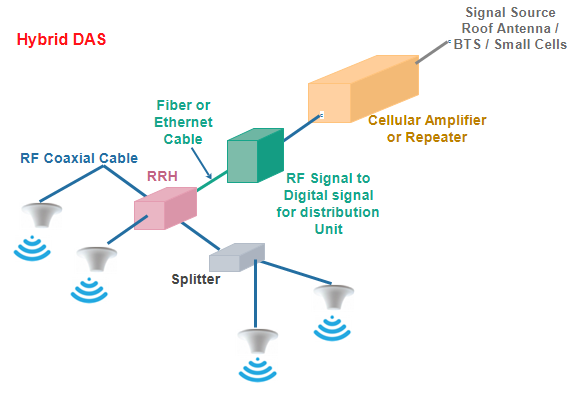What Does TE Connectivity Distributed Antenna Systems - TTI, Inc. Do?

Distributed Antenna System - REECE Things To Know Before You Buy
BTS signal sources tend to offer the most efficiency, including adding additional capability for high-occupancy areas like stadiums and airports. BTS signal sources tend to be the most costly and slowest to release, partially because each provider needs to provide their own fiber optic cable and BTS. BTS signal sources likewise need extra space, cooling, and power that can add high operating expenditure costs.
Little cells can be used as an alternative to dispersed antenna systems, but small cells can likewise be utilized as signal sources in DAS.As signal sources, small cells produce safe and secure tunnels back to carrier networks by means of web connection to generate premium wireless signal - also developed and constructed independently from the business IT network and foundation facilities.
Little cells are cheaper than BTSes, fairly fast to deploy, and can develop premium cordless signals for big structures including hundreds of users. Firstly, not every mobile carrier provides little cells. Second of all, small cells need trusted backhaul internet connections, although they depend on venue-provided connections. Lastly, little cells can be challenging to scale up for countless users, such as for stadiums.

DAS
But there are likewise numerous kinds of signal distribution systems. This Is Noteworthy of DAS signal circulation systems are passive DAS, active DAS, and hybrid DAS.There are likewise digital distributed antenna systems too, though those are less common. Passive DAS usage passive radio frequency elements like coax cables, splitters, taps, and couplers.

Bidirectional Amplifiers & Distributed Antenna Systems - BearCom
The Single Strategy To Use For Distributed antenna system - Wikipedia
The absence of additional devices can also make passive DAS easier to keep. Passive Dispersed Antenna System Cons, Passive DAS operate on coaxial cable televisions, and longer runs of cable suffer higher attenuation. The attenuation problem requires more precise link spending plan calculation. Active dispersed antenna systems receive analog radio frequencies from the signal source.


GEM Microwave - What is a Distributed Antenna System (DAS)?
The digital signals are dispersed through fiber optic or ethernet cables to remote radio units (RRUs). The RRUs convert digital signals back to analog. Master systems can convert signals from as single or numerous providers. Active DAS also do not use coaxial cable televisions. Active Distributed Antenna System Pros, Active distributed antenna systems do not use coaxial cables, suggesting there's no limitation to the lengths of coax cable runs.
